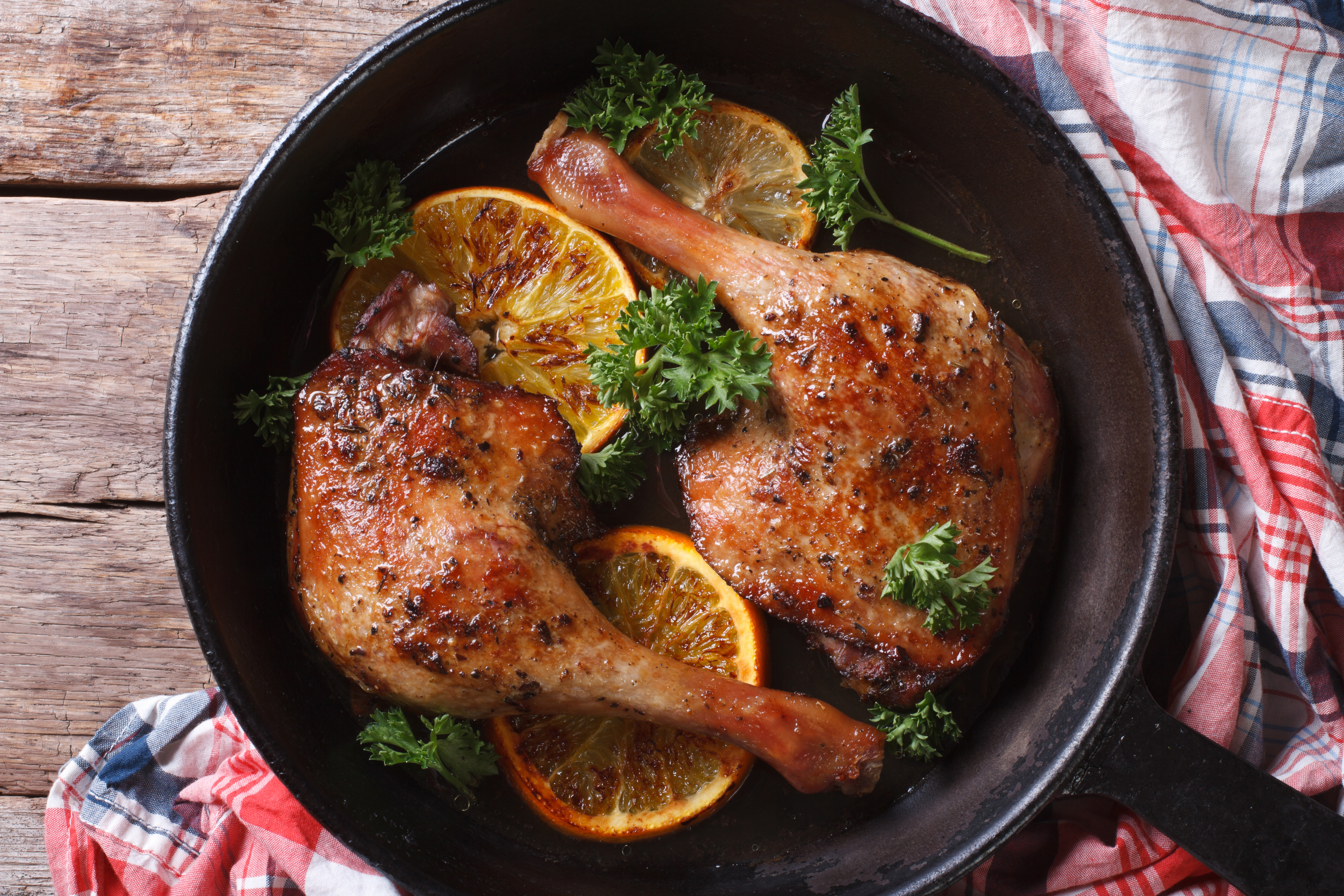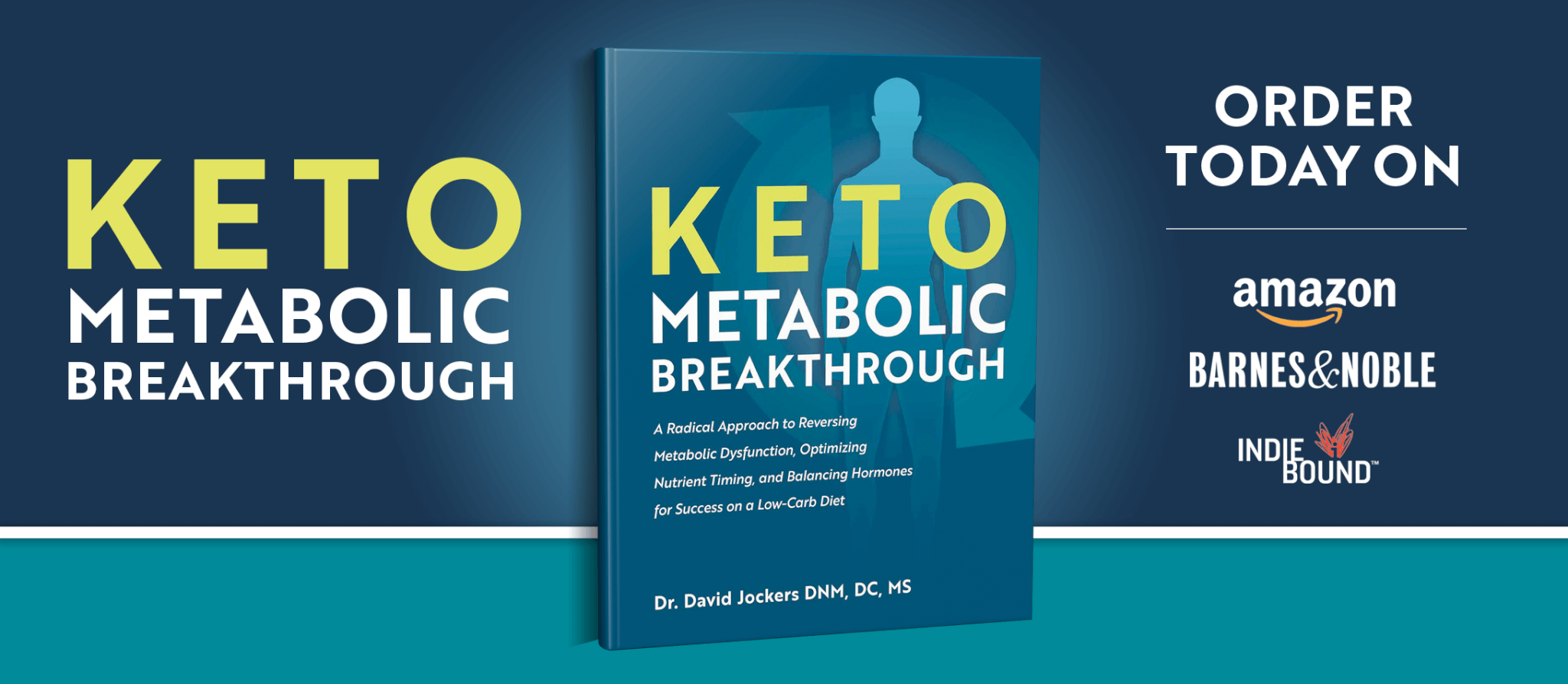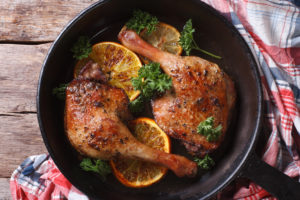
Roasted Turkey Legs:
This turkey leg recipe is made by my wife Angel, who loves to make food, home and body care recipes that support people’s journey to optimal health. Check out my wife’s website, instagram and facebook page where she shares stories and pics about our life. She also has a great YouTube channel you can check out as well. You will love this recipe!
If you enjoy recipes like this, you may be interested in my advanced nutrition and recipe book the Keto Metabolic Breakthrough.
Roasted Sage Buttery Keto Turkey Legs
Prep
Cook
Total
Yield 4 Turkey Legs
Roasted Turkey Legs Ingredients:
4 turkey legs
1 tbsp. of virgin coconut oil or olive oil
Parsley and orange slices for garnish on top afterwards
Sage Butter and Sage Salt Ingredients:
1/2 stick (2 oz.) of pasture-fed butter or ghee left out to soften.
24 fresh sage leaves (or 1 tbsp. of dried sage)
Himalayan pink salt
Optional Ingredients: Oregano, basil & thyme
Instructions:
Step #1: For the sage butter and sage salt, in a toaster oven set very low (150-175 degrees), dry the sage leaves until they are crisp and brittle, 2-3 hours.
Step #2: Crumble them in a small bowl and add an equal part salt. Whip half of this mixture into the butter and reserve the rest. I also like to add in some dried oregano, basil and thyme for more antioxidants, aroma and flavor.
Step #3: Roll the herbed butter in parchment paper and place in the freezer.
Step #4: Take the sage butter out of the freezer and cut into coins.
Step #5: While preheating the broiler, make slices in the skin of the turkey legs and place the butter coins in between the skin and the meat.
Step #6: Line a shallow roasting dish with aluminum foil and add the turkey legs. In the pic, we also added orange slices.
Step #7: Rub the legs on both sides with the oil (if using coconut oil, you may have to warm it a little) and the sage and salt and broil for 12-15 minutes on each side, until a crunchy skin forms.
Step #8: Reduce the heat to 350 degrees and cook for another 30-35 minutes until done. When finished garnish with herbs (parsley in the image above).
***Nutritional info does not include optional ingredients. ***
***The nutrition info for this recipe is based on the linked ingredients above**
Courses Main Course
Nutrition Facts
Serving Size 1 turkey leg
Amount Per Serving | ||
|---|---|---|
Calories 280 | ||
% Daily Value | ||
Total Fat 21 g | 32% | |
Dietary Fiber 3 g | 12% | |
Protein 20 g | 40% | |
* Percent Daily Values are based on a 2,000 calorie diet. Your daily values may be higher or lower depending on your calorie needs.
 Inflammation Crushing Ebundle
Inflammation Crushing Ebundle
The Inflammation Crushing Ebundle is designed to help you improve your brain, liver, immune system and discover the healing strategies, foods and recipes to burn fat, reduce inflammation and thrive in life!
As a doctor of natural medicine, I have spent the past 20 years studying the best healing strategies and worked with hundreds of coaching clients, helping them overcome chronic health conditions and optimize their overall health.
In our Inflammation Crushing Ebundle, I have put together my very best strategies to reduce inflammation and optimize your healing potential. Take a look at what you will get inside these valuable guides below!
Dr Jockers Comments:
A turkey leg is one of the best parts of the animal. Most people love the muscle meats and in particular the chest and breast. However, the tissues surrounding the bones are one of the absolute nutrient dense regions of the animal. This includes collagen rich ligaments and joint capsules as well as mitochondrial rich tendons and muscles in the legs.
Most turkey legs are bathed in some sort of processed peanut, soy, corn or canola oil. These turkey legs have both coconut oil and pastured butter on them. These are very healthy fatty acids that are able to withstand high heat and have enormous health potential for balancing hormones, reducing inflammation and improving brain function.
Adding in an antioxidant rich herb such as sage provides great flavor, aroma and protective phytonutrients. You could also pepper the turkey legs with other powerful herbs such as oregano, basil and thyme. These only add to the flavor and improve the nutritional potential of the meal.





